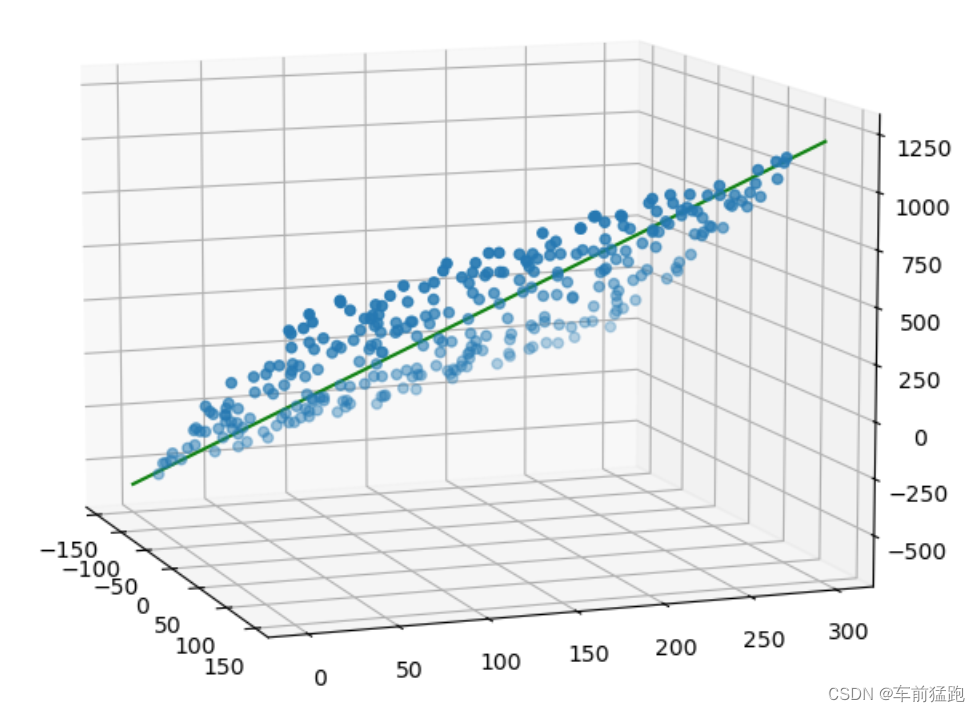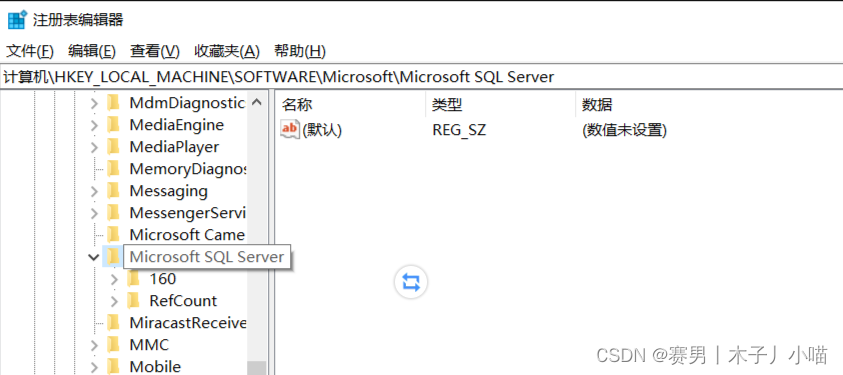在 3D 点云处理中,RT 矩阵是一个常用的工具,用于对点云进行旋转和平移操作。本文将详细介绍 RT 矩阵的概念,并通过一个示例程序演示如何基于 PCL 和 Eigen 库将一帧点云进行矩阵变换再输出。
本教程的示例代码和点云数据可在 GitHub 下载。
什么是 RT 矩阵
RT 矩阵包含旋转矩阵(R)和平移向量(T),组合起来可以描述一个刚体变换。具体来说,RT 矩阵是一个 4x4 的同质坐标变换矩阵,包含两个部分:
- 旋转矩阵(R):这是一个 3x3 的矩阵,用于描述点云的旋转。旋转矩阵是一个正交矩阵,表示绕某个轴的旋转。
- 平移向量(T):这是一个 3x1 的向量,用于描述点云的平移。平移向量表示在各个方向上的移动距离。
组合起来,RT 矩阵可以表示为:
|-------> This column is the translation
| 1 0 0 x | \
| 0 1 0 y | }-> The identity 3x3 matrix (no rotation) on the left
| 0 0 1 z | /
| 0 0 0 1 | -> We do not use this line (and it has to stay 0,0,0,1)
其中,R 是 3x3 的旋转矩阵,T 是 3x1 的平移向量,右下角的 1 是为了使矩阵成为同质坐标形式的 4x4 矩阵。
旋转矩阵(R)
旋转矩阵通常可以通过欧拉角、旋转向量或四元数来计算。
欧拉角:通过绕固定轴(如 X, Y, Z 轴)依次旋转相应的角度来构建旋转矩阵。例如:
-
绕 X 轴旋转角度( α \alpha α )
R x ( α ) = [ 1 0 0 0 cos α − sin α 0 sin α cos α ] \mathbf{R_x}(\alpha) = \begin{bmatrix} 1 & 0 & 0 \\ 0 & \cos\alpha & -\sin\alpha \\ 0 & \sin\alpha & \cos\alpha \end{bmatrix} Rx(α)= 1000cosαsinα0−sinαcosα -
绕 Y 轴旋转角度( β \beta β )
R y ( β ) = [ cos β 0 sin β 0 1 0 − sin β 0 cos β ] \mathbf{R_y}(\beta) = \begin{bmatrix} \cos\beta & 0 & \sin\beta \\ 0 & 1 & 0 \\ -\sin\beta & 0 & \cos\beta \end{bmatrix} Ry(β)= cosβ0−sinβ010sinβ0cosβ -
绕 Z 轴旋转角度( γ \gamma γ )
R z ( γ ) = [ cos γ − sin γ 0 sin γ cos γ 0 0 0 1 ] \mathbf{R_z}(\gamma) = \begin{bmatrix} \cos\gamma & -\sin\gamma & 0 \\ \sin\gamma & \cos\gamma & 0 \\ 0 & 0 & 1 \end{bmatrix} Rz(γ)= cosγsinγ0−sinγcosγ0001
通过将这些旋转矩阵按顺序相乘,可以得到最终的旋转矩阵 R \mathbf{R} R。
旋转向量:通过旋转轴和旋转角度来构建旋转矩阵。旋转向量表示绕一个单位向量旋转一定角度,使用 Rodrigues 公式可以将其转换为旋转矩阵。
四元数:四元数是一种表示旋转的方式,能够避免欧拉角的万向节锁问题。通过四元数转换公式可以得到旋转矩阵。
平移向量(T)
平移向量是一个简单的 3x1 向量,表示在 X, Y, Z 三个方向上的平移量:
T = [ t x t y t z ] \mathbf{T} = \begin{bmatrix} t_x \\ t_y \\ t_z \end{bmatrix} T= txtytz
应用 RT 矩阵
假设有一个 3D 点 P = [ x y z ] T \mathbf{P} = \begin{bmatrix} x & y & z \end{bmatrix}^T P=[xyz]T,其同质坐标表示为 P h = [ x y z 1 ] T \mathbf{P_h} = \begin{bmatrix} x & y & z & 1 \end{bmatrix}^T Ph=[xyz1]T。
应用 RT 矩阵进行变换可以表示为: P h ′ = R T ⋅ P h \mathbf{P'_h} = \mathbf{RT} \cdot \mathbf{P_h} Ph′=RT⋅Ph 。
其中, P h ′ = [ x ′ y ′ z ′ 1 ] T \mathbf{P'_h} = \begin{bmatrix} x' & y' & z' & 1 \end{bmatrix}^T Ph′=[x′y′z′1]T ,展开后为:
[ x ′ y ′ z ′ 1 ] = [ R 11 R 12 R 13 t x R 21 R 22 R 23 t y R 31 R 32 R 33 t z 0 0 0 1 ] ⋅ [ x y z 1 ] \begin{bmatrix} x' \\ y' \\ z' \\ 1 \end{bmatrix} = \begin{bmatrix} R_{11} & R_{12} & R_{13} & t_x \\ R_{21} & R_{22} & R_{23} & t_y \\ R_{31} & R_{32} & R_{33} & t_z \\ 0 & 0 & 0 & 1 \end{bmatrix} \cdot \begin{bmatrix} x \\ y \\ z \\ 1 \end{bmatrix} x′y′z′1 = R11R21R310R12R22R320R13R23R330txtytz1 ⋅ xyz1
经过计算,变换后的点 P ′ \mathbf{P'} P′ 的坐标为:
P ′ = [ x ′ y ′ z ′ ] = R ⋅ [ x y z ] + T \mathbf{P'} = \begin{bmatrix} x' \\ y' \\ z' \end{bmatrix} = \mathbf{R} \cdot \begin{bmatrix} x \\ y \\ z \end{bmatrix} + \mathbf{T} P′= x′y′z′ =R⋅ xyz +T
通过 RT 矩阵的应用,可以对一整帧点云的每一个点进行旋转和平移,从而实现点云的刚体变换。
示例程序
下面使用 PCL 库(Point Cloud Library)来实现将一帧点云经过 RT 矩阵转换输出另一帧点云,并将两帧点云同时可视化进行对比的演示。完整示例代码如下所示。
#include <pcl/point_types.h>
#include <pcl/io/pcd_io.h>
#include <pcl/visualization/pcl_visualizer.h>
#include <pcl/common/transforms.h>
#include <Eigen/Dense>
#include <thread>
#include <chrono>
int main(int argc, char** argv)
{
// 检查命令行参数
if (argc != 2) {
PCL_ERROR("Usage: %s <input.pcd>\n", argv[0]);
return -1;
}
// 创建点云对象并读取PCD文件
pcl::PointCloud<pcl::PointXYZ>::Ptr cloud(new pcl::PointCloud<pcl::PointXYZ>);
if (pcl::io::loadPCDFile<pcl::PointXYZ>(argv[1], *cloud) == -1) {
PCL_ERROR("Couldn't read the file %s\n", argv[1]);
return -1;
}
// 创建RT矩阵,将矩阵初始化为单位矩阵
Eigen::Matrix4f transform = Eigen::Matrix4f::Identity();
// 定义旋转矩阵 (绕Z轴旋转45度)
float theta = M_PI / 4; // 弧度制角度
transform(0, 0) = cos(theta);
transform(0, 1) = -sin(theta);
transform(1, 0) = sin(theta);
transform(1, 1) = cos(theta);
// 定义平移向量 (平移 x 方向2.5米, y 方向0米, z 方向1米)
transform(0, 3) = 2.5;
transform(1, 3) = 0.0;
transform(2, 3) = 1.0;
// 创建变换后的点云
pcl::PointCloud<pcl::PointXYZ>::Ptr transformed_cloud(new pcl::PointCloud<pcl::PointXYZ>);
pcl::transformPointCloud(*cloud, *transformed_cloud, transform);
// 创建可视化对象
pcl::visualization::PCLVisualizer::Ptr viewer(new pcl::visualization::PCLVisualizer("3D Viewer"));
viewer->setBackgroundColor(0, 0, 0);
// 设置原始点云的颜色为白色
pcl::visualization::PointCloudColorHandlerCustom<pcl::PointXYZ> original_color(cloud, 255, 255, 255);
viewer->addPointCloud<pcl::PointXYZ>(cloud, original_color, "original cloud");
// 设置变换后点云的颜色为红色
pcl::visualization::PointCloudColorHandlerCustom<pcl::PointXYZ> transformed_color(transformed_cloud, 255, 0, 0);
viewer->addPointCloud<pcl::PointXYZ>(transformed_cloud, transformed_color, "transformed cloud");
// 设置点云大小
viewer->setPointCloudRenderingProperties(pcl::visualization::PCL_VISUALIZER_POINT_SIZE, 1, "original cloud");
viewer->setPointCloudRenderingProperties(pcl::visualization::PCL_VISUALIZER_POINT_SIZE, 1, "transformed cloud");
// 添加坐标系
viewer->addCoordinateSystem(1.0);
viewer->initCameraParameters();
// 开始可视化
while (!viewer->wasStopped()) {
viewer->spinOnce(100);
std::this_thread::sleep_for(std::chrono::milliseconds(100));
}
return 0;
}
改程序依赖 PCL 库和 VTK 库,配套 CMakeLists.txt 文件如下:
cmake_minimum_required(VERSION 3.1)
project(transform_demo)
find_package(PCL REQUIRED)
find_package(VTK REQUIRED)
include_directories(${PCL_INCLUDE_DIRS})
link_directories(${PCL_LIBRARY_DIRS})
add_definitions(${PCL_DEFINITIONS})
add_executable(${PROJECT_NAME} transform_demo.cpp)
target_link_libraries(${PROJECT_NAME} ${PCL_LIBRARIES} ${VTK_LIBRARIES})
依次执行以下命令编译源代码:
$ mkdir build && cd build
$ cmake ..
$ make
编译完成后,执行 transform_demo 演示程序,指定 PCD 文件:
$ ./transform_demo ../data/2024-04-09-22-06-07.pcd
输出结果如下:

可以看到,白色为原始点云,红色为经过旋转、平移后的点云。
小结
矩阵变换是点云处理中的一个重要的工具,本文介绍了 RT 矩阵的基本概念和计算方法,RT 矩阵可用于对 3D 点云进行旋转和平移操作。我们通过一个例子演示了如何通过 PCL 和 Eigen 构建 RT 矩阵并实现 3D 点云的旋转平移,相信你已经掌握点云的矩阵变换操作。




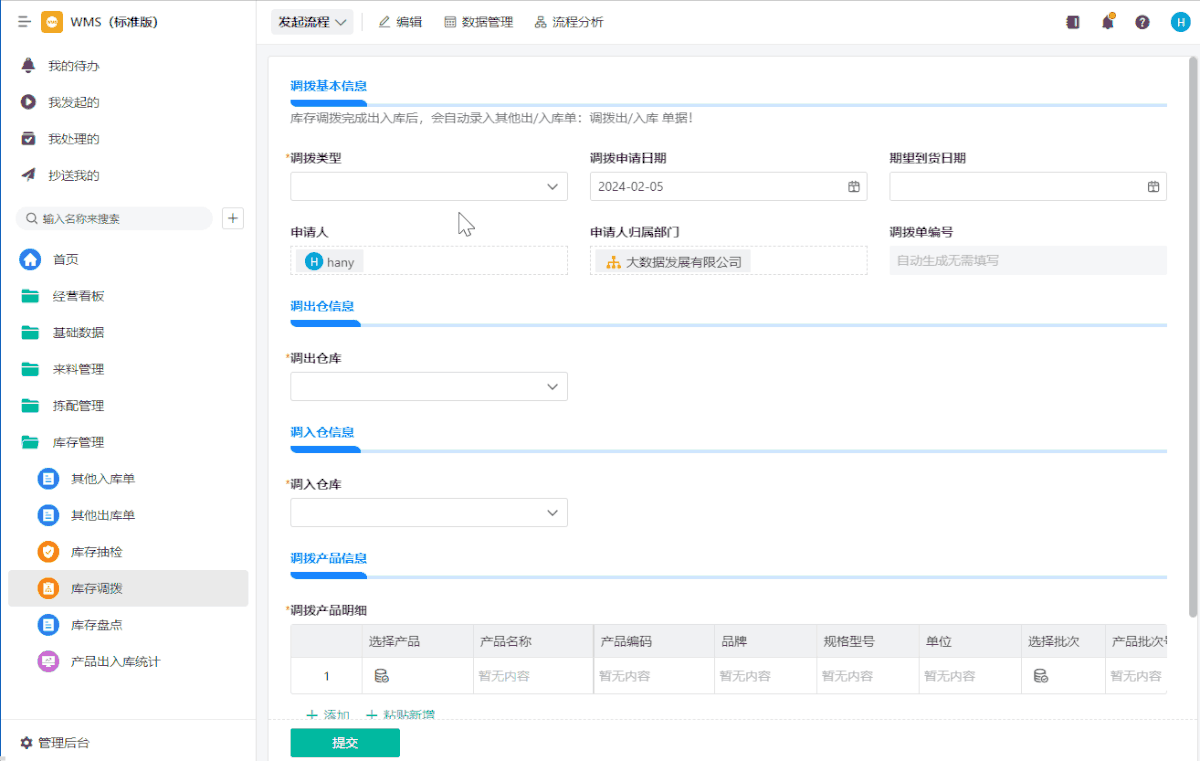



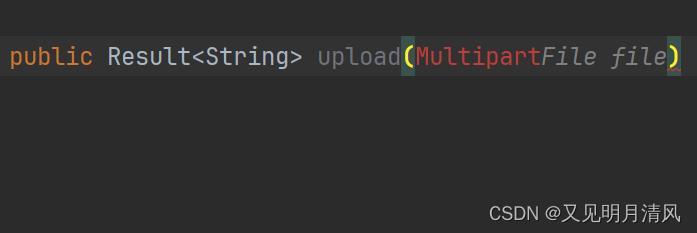

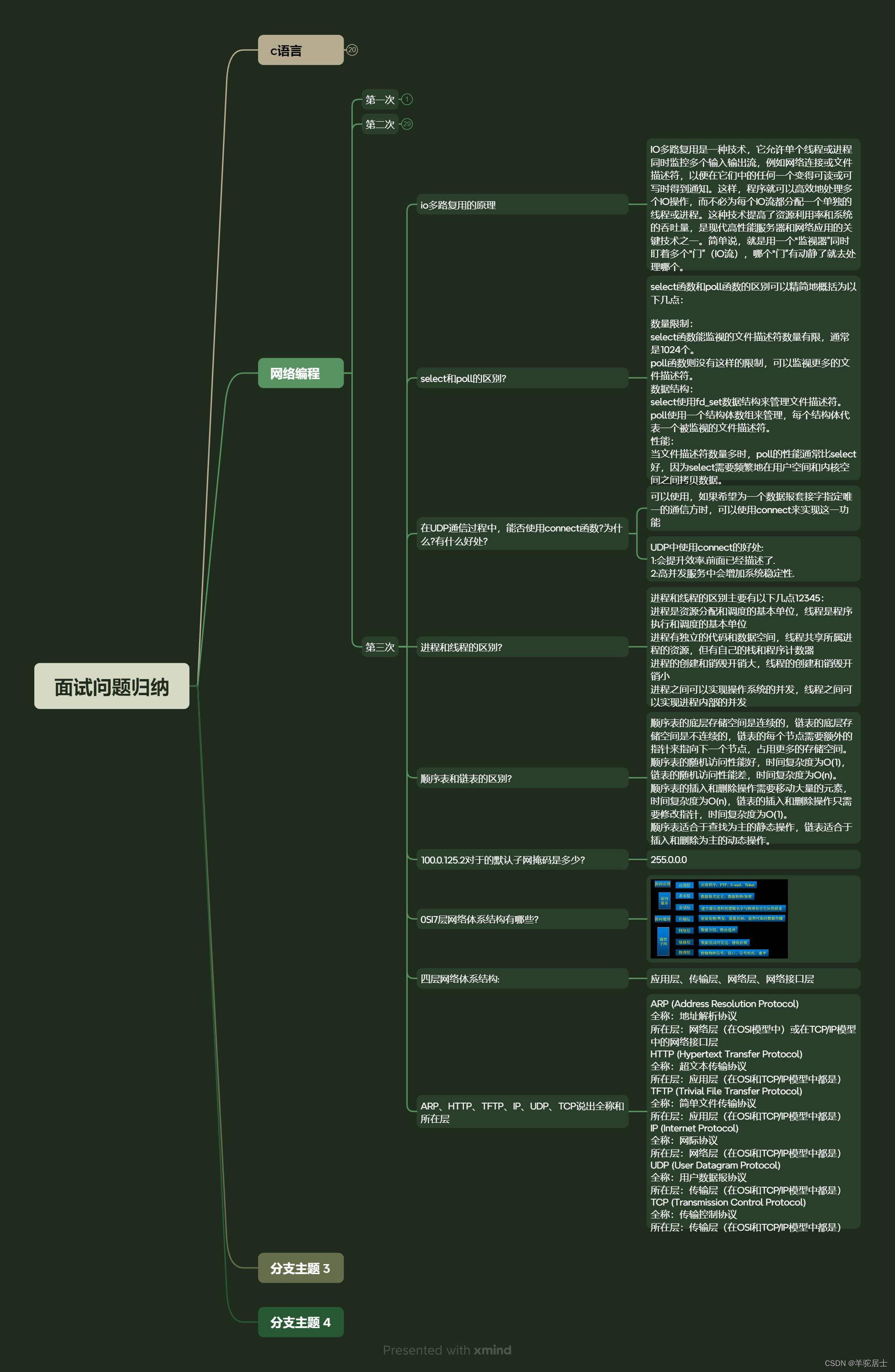
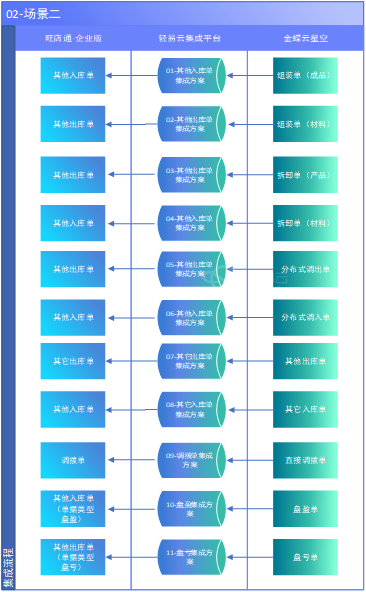

![idea的project structure下project [lauguage ]()level 没有java的sdk17选项如何导入](https://img-blog.csdnimg.cn/direct/572229dcd3464a55b72cdc4dd1c39e32.png)

